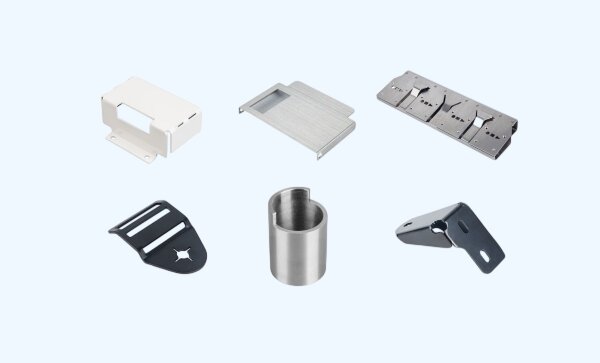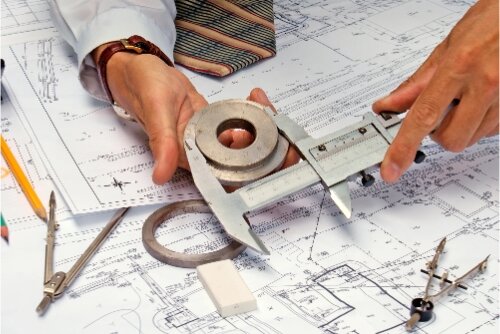Transformar uma boa ideia num produto real nunca é simples - especialmente para as empresas em fase de arranque. Muitas empresas novas chegam a um ponto em que estão prontas para produzir algo, mas descobrem que a maioria das fábricas prefere encomendas grandes. Para uma pequena equipa que ainda está a testar um design ou a verificar a procura do mercado, isto torna-se um sério desafio.
É por isso que queremos falar sobre o fabrico de chapas metálicas de baixo volume. É uma forma prática de as empresas em fase de arranque obterem peças de alta qualidade sem a pressão de grandes séries de produção. Este método proporciona-lhe a flexibilidade para aperfeiçoar o seu design, testar o seu conceito e avançar passo a passo - sem perder tempo ou dinheiro.
Neste artigo, vamos explicar como funciona o fabrico de baixo volume, porque é que se adequa tão bem às pequenas empresas e o que pode esperar do processo. Se está à procura de uma forma eficiente e económica de dar vida à sua ideia, este é um excelente ponto de partida.
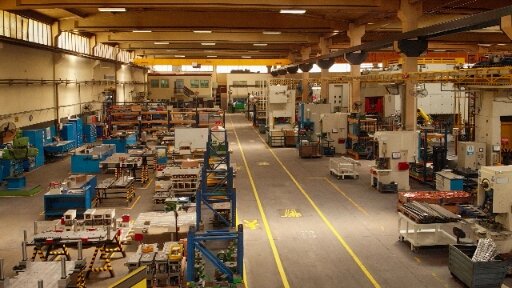
O que é o fabrico de baixo volume?
O fabrico de baixo volume refere-se à produção de um pequeno número de peças, normalmente entre algumas dezenas e alguns milhares de unidades. Funciona como uma ponte entre a prototipagem e a produção em grande escala. Este processo permite aos fabricantes criar peças genuínas e utilizáveis sem o investimento significativo ou os longos tempos de preparação normalmente necessários para a produção em massa.
A produção em massa tem como objetivo a produção de grandes quantidades com elevada eficiência e automatização. Necessita frequentemente de ferramentas dispendiosas, de uma configuração pormenorizada e de um investimento inicial significativo. Em contraste, o fabrico de baixo volume centra-se na produção de lotes mais pequenos, entregando-os mais rapidamente e oferecendo maior flexibilidade. Isto faz com que seja mais fácil para as empresas ajustarem-se às actualizações de design, ao feedback do mercado e às necessidades iniciais dos clientes.
As empresas em fase de arranque e os fabricantes de pequena e média dimensão preferem frequentemente esta abordagem porque ajuda a gerir os riscos financeiros. Podem produzir apenas o necessário, o que evita o excesso de stock e o desperdício de material. Este método também ajuda a manter um melhor controlo dos custos e mantém o fluxo de caixa estável.
Desafios da produção de baixo volume
O fabrico de baixo volume proporciona flexibilidade, mas também traz alguns desafios. As empresas em fase de arranque enfrentam frequentemente custos mais elevados por peça e menos opções de fornecedores. Conhecer estes limites ajuda-o a planear melhor e a evitar despesas inesperadas mais tarde.
Elevados custos de configuração por peça
Mesmo que o tamanho da encomenda seja pequeno, o processo de preparação continua a exigir tempo e esforço. As ferramentas, a preparação da máquina e a programação são custos fixos que permanecem relativamente constantes, independentemente da quantidade. Uma vez que estes custos são distribuídos por menos unidades, o preço por unidade aumenta.
Por exemplo, a construção de moldes ou acessórios personalizados para peças de chapa metálica pode ser um empreendimento dispendioso. Quando os volumes de produção são baixos, demora mais tempo a recuperar estas despesas. Este facto torna muitas vezes as pequenas séries mais caras, especialmente no caso de designs complexos ou de peças que requerem equipamento especializado.
Opções limitadas de fornecedores
Nem todos os fabricantes estão dispostos a aceitar pequenas encomendas. Muitos preferem trabalhos de grande volume que mantêm as suas máquinas a funcionar sem parar. Isto faz com que seja mais difícil para as empresas em fase de arranque encontrar fornecedores que aceitem trabalhos de baixo volume.
Aqueles que oferecem serviços de pequenos lotes centram-se normalmente em protótipos ou projectos personalizados. Os seus preços, prazos de entrega e capacidades podem variar significativamente. Encontrar um parceiro fiável que compreenda as necessidades de produção a curto prazo requer paciência e uma pesquisa exaustiva. As empresas em fase de arranque beneficiam mais com os fornecedores que comunicam claramente os custos, os prazos e as opções de escalonamento futuro.
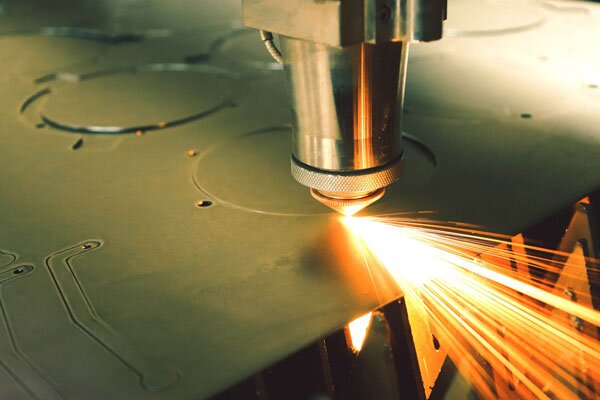
Vantagens do fabrico de baixo volume
O fabrico de baixo volume oferece às empresas em fase de arranque a flexibilidade para testar, aperfeiçoar e crescer ao seu próprio ritmo. Reduz a necessidade de investimentos iniciais significativos e acelera o desenvolvimento de produtos. Esta flexibilidade permite que as empresas coloquem no mercado produtos melhores, reduzindo o risco financeiro.
Flexibilidade nas alterações de conceção
Os projectos de produtos são frequentemente alterados após a realização de testes ou após o feedback dos clientes. Com o fabrico de baixo volume, é muito mais fácil fazer actualizações porque os ciclos de produção são curtos. Se uma peça precisar de ser ajustada, os engenheiros podem rever o projeto e produzir um novo lote rapidamente sem desperdiçar materiais ou tempo.
Esta adaptabilidade mantém os projectos no bom caminho e ajuda a evitar retrabalhos dispendiosos. Também incentiva a criatividade, permitindo que as equipas explorem novas ideias e melhorias sem o receio de ficarem presas a peças antigas ou não utilizadas.
Iteração mais rápida e testes de mercado
A rapidez é outra vantagem significativa. O fabrico de baixo volume oferece prazos de entrega curtos, permitindo a rápida conversão de projectos em peças genuínas. As empresas em fase de arranque podem lançar lotes de teste, recolher feedback do mercado e ajustar os seus produtos quase em tempo real.
Este ciclo de feedback rápido ajuda a aperfeiçoar o design e a função antes da produção em massa. Encurta o caminho desde o conceito até ao lançamento, o que é especialmente útil em indústrias que se movem rapidamente. As iterações mais rápidas significam que as equipas podem tomar melhores decisões com dados do mundo real e construir um produto final mais forte.
Como validar desenhos rapidamente?
A validação antecipada de um projeto ajuda a poupar tempo e dinheiro. O fabrico de baixo volume permite a construção e o teste de peças reais antes do início da produção em grande escala. As empresas em fase de arranque podem identificar rapidamente problemas de conceção, melhorar a funcionalidade e verificar o modo como os componentes se adaptam e funcionam em condições reais de utilização.
Prototipagem com chapa metálica
A prototipagem converte os desenhos digitais em componentes físicos para teste. O processo começa normalmente com desenhos CAD. Estes ficheiros orientam máquinas como cortadores a laser, prensas de travagem e soldadores para moldar o metal com precisão.
Assim que o primeiro lote é produzido, os engenheiros inspeccionam as peças quanto às dimensões, ajuste e qualidade da superfície. Se encontrarem algum problema, ajustam o projeto e tentam novamente. Este teste inicial confirma que o produto funciona como pretendido. Também torna a produção posterior mais rápida e suave, porque a maioria dos problemas de design já foram resolvidos.
Importância do Design para Manufaturabilidade (DFM)
DFM significa criar peças que sejam simples, eficientes e fáceis de produzir. No fabrico de baixo volume, a aplicação do DFM é especialmente útil. Mantém os custos das ferramentas baixos e reduz o tempo de preparação.
As boas práticas de DFM incluem a utilização de formas simples, a manutenção de raios de curvatura consistentes e o espaçamento correto dos orifícios. A escolha de materiais fáceis de cortar e dobrar também ajuda a acelerar a produção. Quando os engenheiros concebem tendo em mente o fabrico, as pequenas séries tornam-se mais rápidas, mais fiáveis e mais rentáveis.
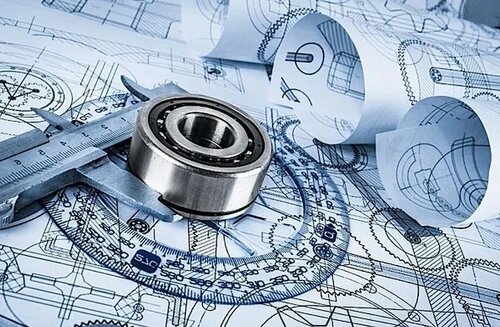
Capacidades essenciais a procurar num fabricante
A escolha do parceiro de fabrico correto tem um impacto significativo no bom funcionamento de um projeto para empresas em fase de arranque que produzem pequenos lotes. A flexibilidade, a rapidez e a competência técnica são os factores mais importantes. O parceiro certo pode transformar rapidamente um conceito num produto acabado, mantendo uma qualidade consistente.
Variedade de equipamentos e processos
Um fabricante capaz deve oferecer uma vasta gama de serviços de fabrico. Ter processos como corte a laser, flexão, estampageme soldadura A produção eficiente é assegurada por todas as instalações numa só. Isto reduz a externalização, encurta os prazos de entrega e assegura um melhor controlo de qualidade.
Quando tudo acontece debaixo do mesmo teto, a comunicação torna-se mais fácil. Também é mais rápido fazer ajustes se surgir uma alteração de design durante a produção. Esta configuração interligada poupa tempo e ajuda as empresas em fase de arranque a passar do protótipo à produção sem atrasos desnecessários.
Seleção e fornecimento de materiais
As empresas em fase de arranque precisam frequentemente de testar diferentes materiais antes de fazerem uma escolha final. Um fabricante que trabalhe com uma variedade de metais - como alumínio, aço inoxidável e aço carbono - oferece mais flexibilidade para o desenvolvimento do produto.
As fortes ligações com os fornecedores também ajudam a manter os custos dos materiais previsíveis e os prazos de entrega curtos. O fornecimento fiável garante que os materiais certos estão sempre disponíveis, mesmo para pequenas encomendas. Isto é especialmente importante para as empresas em fase de arranque que necessitam de uma qualidade consistente e de prazos de entrega rápidos.
Experiência em reviravoltas rápidas
A velocidade é fundamental no fabrico de baixo volume. Um fabricante com experiência no tratamento de projectos de rotação rápida pode adaptar-se a alterações de design e cumprir prazos apertados sem perder a precisão. Compreendem como encontrar um equilíbrio entre eficiência e qualidade.
Uma equipa experiente sabe como planear a produção, ajustar as configurações e minimizar o tempo de inatividade da máquina. Para as empresas em fase de arranque, isto significa uma entrega mais rápida das peças, testes mais rápidos e mais oportunidades para afinar os projectos antes de se comprometer com a produção em grande escala.
Fluxo de trabalho típico: Do protótipo à produção de pequenos lotes
A produção de chapas metálicas de baixo volume segue um processo simples, passo a passo. Cada fase centra-se na precisão, repetibilidade e qualidade consistente - desde o protótipo até ao lote final. A compreensão deste fluxo de trabalho ajuda as empresas em fase de arranque a prepararem-se melhor e a avançarem mais rapidamente para a produção.
Apresentação de um desenho ou modelo
O processo começa quando envia os seus ficheiros de design para o fabricante. A maioria das empresas exige desenhos 2D com dimensões, tolerâncias e notas, bem como ficheiros CAD 3D em formatos como STEP, IGES ou SolidWorks. Estes ficheiros permitem que os engenheiros revejam a geometria da peça, verifiquem a capacidade de fabrico e identifiquem antecipadamente potenciais problemas.
Também é importante incluir pormenores como o tipo de material, a espessura, o acabamento da superfície e a quantidade da encomenda. Esta informação ajuda o fabricante a fornecer um orçamento exato e atempado. Quanto mais completa for a sua apresentação, menor será o número de perguntas que terá de fazer mais tarde. Uma comunicação clara nesta fase ajuda a encurtar os prazos de entrega e a reduzir os erros.
Fabrico de amostras e protótipos
Uma vez aprovado o projeto, o fabricante cria um protótipo ou a primeira peça do artigo. Esta peça é utilizada para confirmar que o design, os materiais e os processos correspondem às expectativas. Os engenheiros medem então as dimensões principais, verificam o ajuste da montagem e testam a funcionalidade.
Se forem necessários ajustes, o design é rapidamente aperfeiçoado. Isto garante que a peça final funciona corretamente e cumpre todos os requisitos. A prototipagem também ajuda a afinar as configurações e as ferramentas, o que melhora a consistência e a eficiência em séries de produção posteriores.
Dimensionamento para encomendas de pequenos lotes
Depois de o protótipo passar nos testes, a produção passa para o fabrico de pequenos lotes. A mesma configuração, materiais e métodos verificados são utilizados para manter a qualidade e a exatidão. Durante esta fase, o foco passa a ser a obtenção de tolerâncias consistentes, acabamentos suaves e montagem correta em todas as peças.
São realizadas inspecções contínuas durante a produção para detetar prontamente quaisquer variações. As empresas em fase de arranque podem utilizar estes lotes para execuções-piloto ou testes de mercado antes de aumentarem a escala. Uma vez confirmados o design e a procura, a transição para volumes maiores torna-se mais rápida, mais suave e mais económica.
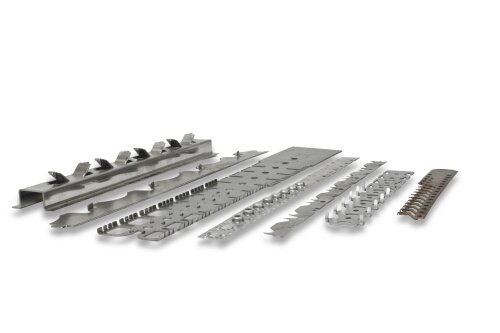
Como é que a Shengen apoia as empresas em fase de arranque e as PME?
Na Shengen, compreendemos os desafios que o fabrico em fase inicial apresenta às empresas em fase de arranque e às pequenas empresas. Muitas equipas têm ideias sólidas, mas enfrentam limites de orçamento, tempo e prontidão de design. É por isso que prestamos apoio total em todas as fases - desde a validação do conceito até à produção de pequenos lotes.
Serviço completo do protótipo à produção
Oferecemos um serviço de fabrico abrangente que combina conhecimentos de engenharia com tecnologia de fabrico avançada. A nossa equipa ajuda a aperfeiçoar os desenhos CAD, a selecionar os materiais adequados e a ajustar os projectos para os tornar mais fáceis e mais rentáveis de produzir.
Após a confirmação do protótipo, tratamos da produção utilizando o corte a laser, a maquinagem CNC, a dobragem e a soldadura - tudo sob o mesmo teto. Esta configuração integrada simplifica a comunicação e garante uma qualidade consistente em todas as etapas. Também gerimos o acabamento de superfícies, a montagem e a embalagem, assegurando que as peças chegam prontas para serem utilizadas ou lançadas no mercado.
Para as empresas em fase de arranque, este apoio de ponta a ponta poupa tempo e evita o retrabalho desnecessário. Também elimina a necessidade de coordenar com vários fornecedores, permitindo que os projectos avancem sem problemas desde a conceção até à conclusão.
Exemplos de colaborações anteriores com empresas em fase de arranque
Apoiámos empresas em fase de arranque em vários sectores, incluindo eletrónica de consumo, energias renováveis e equipamento industrial. Muitos clientes chegam até nós com desenhos CAD ou protótipos iniciais. Os nossos engenheiros trabalham em estreita colaboração com eles para aperfeiçoar os pormenores de montagem, melhorar a funcionalidade e preparar a produção de baixo volume.
Uma startup de hardware, por exemplo, precisava de um caixa de alumínio personalizada para um novo dispositivo sensor. Produzimos um pequeno lote de unidades cortadas a laser, dobradas e revestidas a pó em poucos dias para testes no terreno. Outro cliente que estava a desenvolver equipamento de mobilidade utilizou os nossos rápidos protótipos em aço inoxidável para apresentar amostras de trabalho a investidores e garantir financiamento.
Tem um novo design pronto a testar ou precisa de um pequeno lote para uma produção inicial? A nossa equipa de engenharia está preparada para ajudar. Podemos transformar os seus desenhos CAD em peças de chapa metálica de alta qualidade com rapidez e precisão.
Envie-nos hoje os seus ficheiros de design e os detalhes do projeto. Receberá um orçamento detalhado, feedback de especialistas e um prazo de entrega claro - tudo num curto espaço de tempo.
FAQs
Qual é a quantidade mínima de encomenda típica?
Normalmente, não existe um mínimo rigoroso. Muitos fabricantes podem produzir apenas uma a dez peças para protótipos. Para a produção de pequenos lotes, as quantidades variam normalmente entre 50 e 500 unidades. O número exato depende da complexidade do desenho, do tempo de preparação e dos materiais escolhidos.
Quanto custa o fabrico de baixos volumes?
Os custos dependem de factores como o tamanho, o tipo de material, o processo e os detalhes do design. Uma vez que os custos de configuração são divididos por menos peças, o preço por peça é mais elevado do que na produção em massa. Ainda assim, este método permite poupar dinheiro em geral, pois evita custos elevados com ferramentas e stock desnecessário.
Quais são os prazos médios de entrega?
Os prazos de entrega podem variar entre alguns dias e várias semanas, dependendo dos materiais e das necessidades de produção. As peças simples, como os componentes cortados a laser ou dobrados, são frequentemente concluídas em menos de uma semana. As peças mais complexas que requerem soldadura ou acabamento podem demorar mais tempo a serem concluídas.
Posso alterar o meu desenho ou modelo após o início da produção?
Sim. Esta é uma das principais vantagens do fabrico de baixo volume. Uma vez que os lotes são pequenos, é possível ajustar os ficheiros CAD ou fazer actualizações de design entre execuções. Esta flexibilidade ajuda a afinar o desempenho e garante que o seu produto melhora a cada versão.
Que materiais são habitualmente utilizados?
Os fabricantes trabalham normalmente com alumínio, aço inoxidável, aço laminado a frio e aço galvanizado. A melhor escolha depende da força, do aspeto, da resistência à corrosão e do orçamento do seu produto. O seu fabricante pode ajudá-lo a selecionar o material mais adequado.
É possível aumentar a escala mais tarde?
Sem dúvida. Assim que o seu projeto for exaustivamente testado e a procura do mercado aumentar, a produção pode ser aumentada utilizando as mesmas ferramentas e processos. Começar em pequena escala ajuda a reduzir o risco e garante que cada peça está pronta para uma produção em massa sem problemas quando chegar a altura.
Olá, chamo-me Kevin Lee

Nos últimos 10 anos, tenho estado imerso em várias formas de fabrico de chapas metálicas, partilhando aqui ideias interessantes a partir das minhas experiências em diversas oficinas.
Entrar em contacto

Kevin Lee
Tenho mais de dez anos de experiência profissional no fabrico de chapas metálicas, especializando-me em corte a laser, dobragem, soldadura e técnicas de tratamento de superfícies. Como Diretor Técnico da Shengen, estou empenhado em resolver desafios complexos de fabrico e em promover a inovação e a qualidade em cada projeto.



